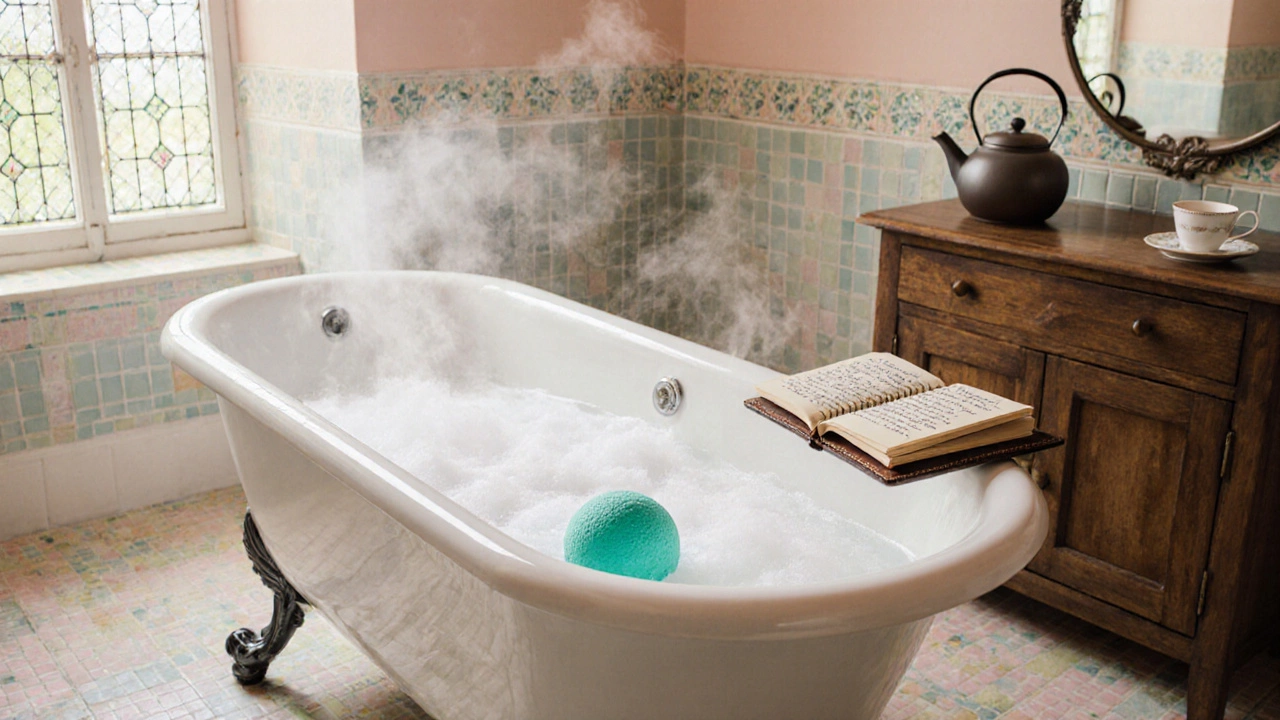Bath Bombs: The Simple Guide to Choosing, Using, and Making Them
If you’ve ever wondered why a fizzy ball of color can turn an ordinary tub into a mini spa, you’re not alone. Bath bombs are cheap, fun, and surprisingly easy to customize. Below you’ll find the basics you need to know before you drop the next one into the water.
What Makes a Bath Bomb Good?
A quality bath bomb should melt quickly, release a pleasant scent, and leave the water feeling soft, not oily. Look for a clear list of ingredients; most good ones contain baking soda, citric acid, Epsom salts, and a light oil or butter for skin‑care benefits. If the label mentions essential oils, you’ll get a stronger fragrance, but be careful if you have sensitive skin—some oils can irritate.
Another quick test is the “fizz factor.” When you drop a bomb in, it should start bubbling within a second and keep going for at least a minute. If it fizzles out too fast, the ratio of acid to base is off and the experience will be underwhelming.
How to Use a Bath Bomb for Maximum Relaxation
First, fill the tub with water that’s warm enough to keep you comfortable for 20–30 minutes. Hot water makes the fizz stronger, but if you’re prone to dry skin, a slightly cooler bath helps keep moisture in.
Drop the bomb in the center of the tub and let it dissolve fully before getting in. This ensures the scent spreads evenly and the color mixes properly. If you like a stronger scent, you can add a few extra drops of the same essential oil to the water after the bomb melts.
While you soak, the minerals in Epsom salts and sea salt will soften muscles, and the added butter or oil will leave a light, non‑greasy film on the skin. Many people report feeling less tension and better sleep after a bath like this.When you’re done, rinse briefly with cool water to close pores, then pat dry. You’ll notice a silky feel that doesn’t require extra lotion.
DIY Bath Bombs: A Quick Recipe Anyone Can Try
Making your own bombs is a great way to control fragrance, color, and cost. Here’s a no‑fuss recipe:
- 1 cup baking soda
- ½ cup citric acid
- ½ cup Epsom salt
- ¼ cup cornstarch (helps the bomb hold together)
- 2 tbsp coconut oil, melted
- 15–20 drops of your favorite essential oil
- Food‑grade color powder (optional)
Mix the dry ingredients in a large bowl. In a separate cup, combine the oil, essential oil, and a splash of water. Slowly drizzle the liquid into the dry mix while whisking with a fork. The mixture should feel like damp sand—press a handful together; it should hold its shape without crumbling.
Pack the mix tightly into silicone molds or ice‑cube trays. Let them sit for at least 4 hours, then pop them out and let them dry for another 24 hours before storing. This basic formula can be tweaked with dried lavender, oatmeal, or even a bit of honey for extra skin‑softening power.
Choosing the Best Bath Bombs Online
When you buy, check reviews for fizz time, scent strength, and skin‑feel. Brands that list exact percentages of essential oil and avoid harsh dyes tend to get higher ratings. If a product claims “all‑natural” but hides a long list of chemicals in the fine print, skip it.
Many subscription boxes include mini‑size bombs, which are perfect for testing new scents without committing to a big bag. Look for bundles that let you mix and match—this way you can find the perfect combo for morning energy or evening unwind.
Whether you buy or DIY, the goal is the same: a relaxing, aromatic soak that leaves your skin soft and your mind calm. Keep these tips in mind, experiment a bit, and you’ll turn any ordinary bathroom into a personal spa sanctuary.
Are Bath Bombs Classified as Cosmetics?
Learn whether bath bombs are legally considered cosmetics, how US and EU regulations differ, what ingredients trigger classification, and the safety rules you need to know.

